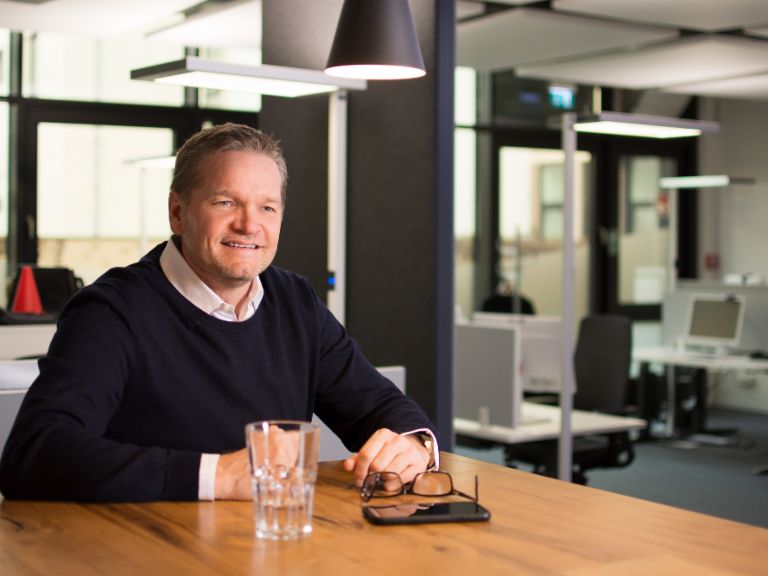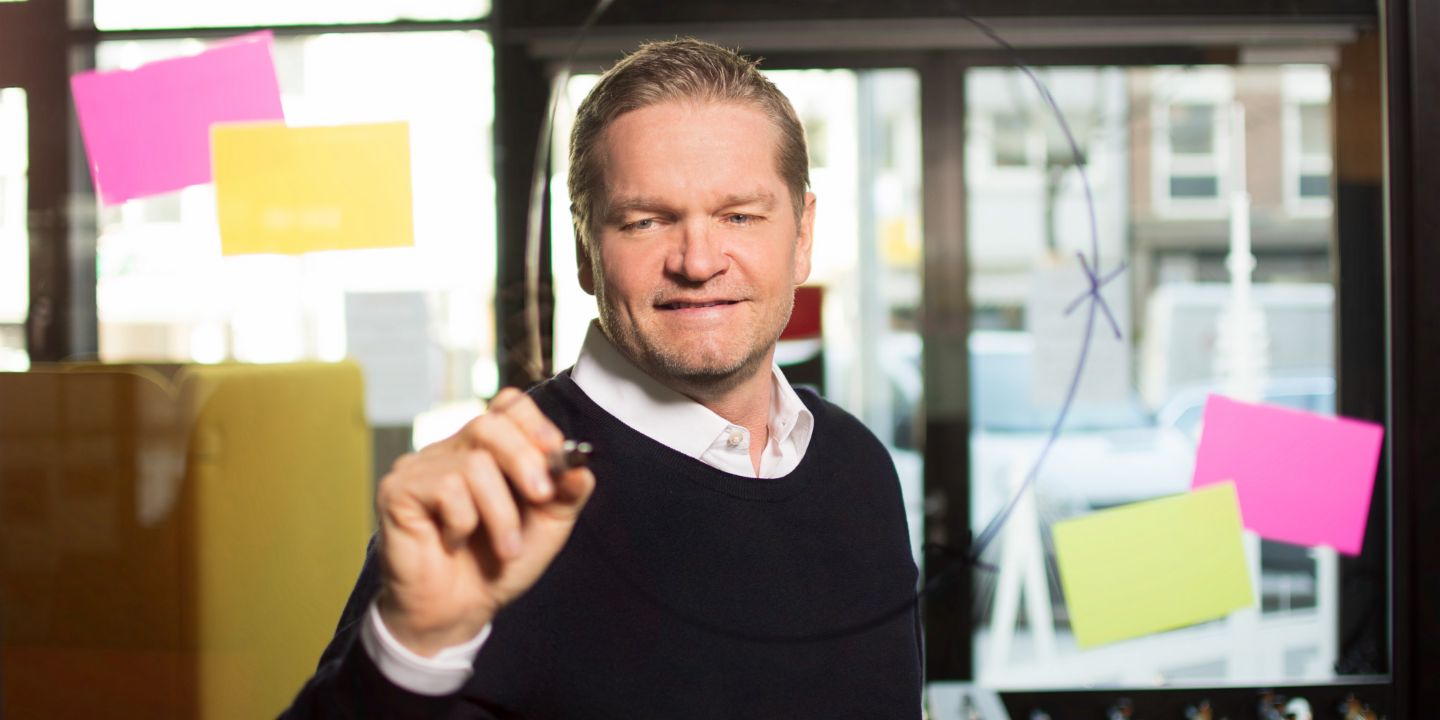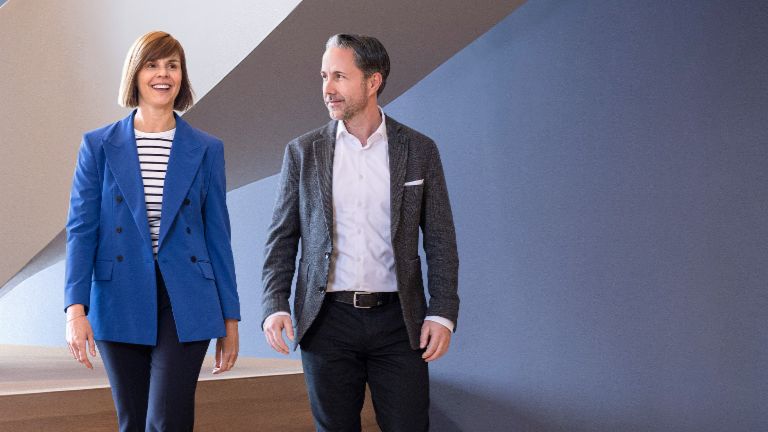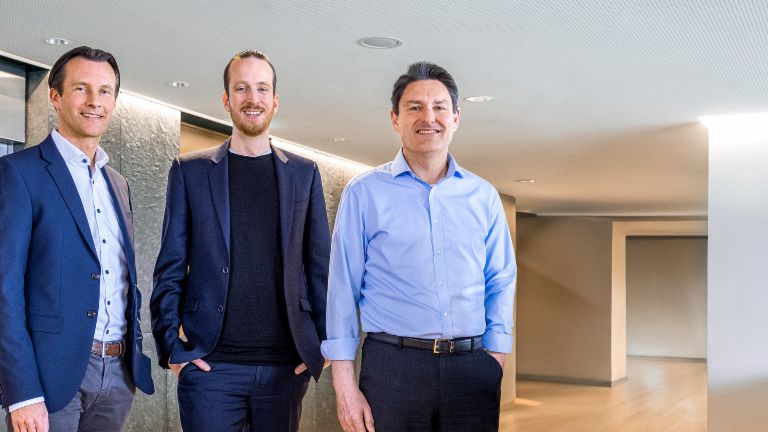The true art of transformation.
“When the financial sector talks about digital transformation nowadays, it is describing a process that EOS has been going through for years now.” An interview with Jürgen Borgartz, Managing Director of EOS Deutschland.

After around 12 months, we can now clearly identify the pandemic’s winners and losers. On which side of this divide do you see EOS?
Jürgen Borgartz: Regardless of the pandemic, we of course regularly monitor incoming payments at EOS. The situations that cause consumers to fall behind with payments –illness, short-time working, unemployment – are now on the increase due to Covid-19. So far, there has been no collapse in incoming payments, so EOS is not on the losing side. However, we also do not consider ourselves to be on the winning side. The pandemic is challenging our entire society in ways that we would gladly have done without. Companies are facing bankruptcy, and people are afraid of losing their jobs, their income, and even their health. We are in a state of emergency.
Thanks to the pandemic, a lot of companies in certain sectors have actually experienced a real boost in respect of their digital transformation process. Is that also the case at EOS?
Our core mission has not changed: EOS remedies payment problems between creditors and their debtors. Digitization helps us to do this. However, in its core business, EOS has already been undergoing a digital transformation process for years now.
We have developed, streamlined and automated countless systems, processes and structures. When the financial sector talks about digital transformation nowadays, it is describing the process that EOS has been going through for years.
Digital transformation had also already made inroads within the organization. At the start of the pandemic, we were able to let more than 80 percent of our employees work remotely from home, because the organization and infrastructure for digital collaboration were already in place. And in the very first weeks of the pandemic we understood that there’s no going back to our former daily routines. What we do need to do is pave the way to the “new normal”, e.g. by replacing individual offices with team zones and expanding the digital infrastructure to facilitate agile work processes. The pandemic therefore confirmed that our strategy of transformation was the right approach.
Repeatedly challenging oneself is the true art of transformation.

How does the digital transformation process affect debtors or clients?
Every day, EOS has thousands of touchpoints with debtors and clients, so it is even more important to make sure this contact works efficiently for both parties. Since the onset of the pandemic we have noticed that our partners are more amenable to digital processes. This includes the use of all digital forms of payment that we offer to defaulting payers for settling their outstanding accounts, as well as the option of contacting us via a chat function. The situation with our customers is similar. Our client portal is digitizing and simplifying our collaboration.
What challenges is EOS currently facing?
We need to subject ourselves to regular scrutiny: How can we leverage digital tools to map the entire daily work routine? Why are only 90 percent of our colleagues working from home, why not 100 percent? What other processes can we digitize? Repeatedly challenging oneself is the true art of transformation.
What makes this transformation a cultural process at EOS?
The digital transformation can only succeed with a motivated workforce and strong corporate culture. We emphasize continuous development, courage, and clear communication. We work across functions and hierarchies, so a younger colleague will sometimes make the management see what it is getting wrong. Deep down, EOS is a lot like a fintech. And we will only continue to successfully manage the process of transformation with this kind of culture.
How does digitalization affect you personally?
As a 50-something, I am certainly not a digital native, but I find the process of digital transformation invigorating. I am constantly adding to my knowledge and getting excited about new topics, so my heart beats like a 20-year-old. However, this also means that my young colleagues need to have a lot of patience with me.
Photo credits: EOS
Odkryj więcej od EOS



